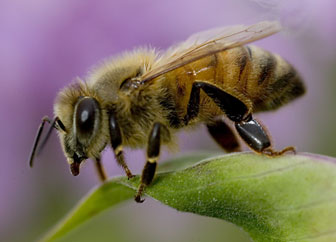20-40% of U.S. bees have disappeared
20-40% of U.S. bees have disappeared
mongabay.com
May 14, 2007
Known and unknown ailments have killed 20 to 40 percent of bee colonies across the United States this winter according to a leading entomologist.
While similar catastrophic die-offs to bee populations occurred in the winters of 1995-96 and 2000-01, Cornell associate professor of entomology Nicholas Calderone says that at least 25 percent of the deaths this year cannot be attributed to any known honeybee pest. In the recent past, tracheal mites (Acarapis woodi) and varroa mites (Varroa destructor), which prey on honeybees and act as a vector for a number of bee viruses, were largely to blame.
No one knows what’s behind the current collapse, though explanations including genetically modified foods, mites, pathogens, pesticides and electromagnetic radiation from cell phones have been proposed.
“Just like in the immediate aftermath of a natural disaster,” Calderone said, “there are a lot of conflicting and inaccurate reports” circulating in the media. “What we do know is that there are an awful lot of dead bees. We are looking for patterns.”
 A honeybee settles onto a wildflower at Fermilab. Image courtesy of the Fermi National Accelerator Laboratory |
There’s a lot at stake. Each year honeybees pollinate crops worth between $8 billion and $12 billion in the United States.
Calderone says several studies suggest that a protozoan, a single-celled parasite called Nosema ceranae, may be playing a role. He also points to a class of insecticides known as neonicotinoids as a possible cause.
He says there is little evidence to suggest that electromagnetic radiation is causing bee deaths.
Calderone cautioned that even if the cause of the new deaths were identified, “we would still be operating in crisis mode due to mite damage.” Mites are especially difficult due to their ability to develop resistance and the affect of mite-targeted insecticides on the quality of honey and the long-term health of colonies.
Reports of Colony Collapse Disorder (CCD) have been documented back to the late 19th century but the current episode is one of the worst ever recorded.
“With CCD, most adult honeybees abandon a hive and disappear, leaving the queen and a remnant of younger bees,” stated a news release from the University of Montana. “The malady also is characterized by uncapped brood — when the cells of young bees in the pupa stage are not covered and protected by their older sisters — probably because most of the adult bees have left. Dead adult bees aren’t found near the hive; they are just gone.”
This article is based on a news release from Cornell University